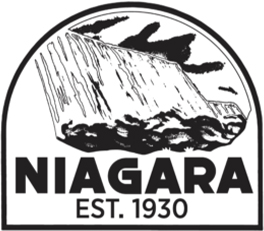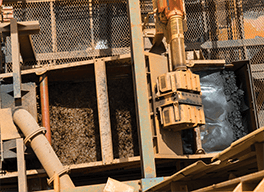Washington Samuel Tyler founded The W.S. Tyler Company in Cleveland, Ohio in 1872 with the basic operating principle, “our products are not an end in themselves, but a means by which our customer can accomplish something useful and profitable.”

In 1887, Carl Haver and Eduard Boecker founded Haver & Boecker in Hohenlimburg, Germany; later moving to Oelde in 1897.
The first Niagara vibrating screens are manufactured.
After several previous visits to the USA, including a visit to The W.S. Tyler Company, Fritz Haver traveled to Cincinnati, Ohio, in 1930, to attend the American Gravel Association’s annual meeting. During the conference, his attention was immediately drawn to a presentation comparing conventional rotating screens with a new generation of vibrating screen – the NIAGARA.
Developed by William Wettlaufer, an American of German decent, the NIAGARA was overwhelmingly favored by the attending delegates.
Wettlaufer, who lived in Buffalo, New York, was inspired by the nearby Niagara Falls in naming his invention. The majestic water falls reminded him of coarse material falling off the discharge end of the NIAGARA screen during the screening process.
Thrilled with the NIAGARA design, Haver negotiated with Wettlaufer to purchase the license agreement, and the first three machines shipped from the USA to Germany.
Haver & Boecker immediately created a department dedicated to screening, and named it NIAGARA.
Fueled by the mining boom, The W.S. Tyler Company opened its first international subsidiary in the Canadian city of St. Catharines, Ontario, located only minutes away from the famous Niagara Falls, in 1930.
W.S. Tyler purchased the same NIAGARA patent in 1935 and immediately began manufacturing the new screen in both its Cleveland and St. Catharines locations with overwhelming success.

Haver & Boecker
Latinoamericana opened in Monte Mor.
Thirty-nine years later, Haver & Boecker Latinoamericana opened its doors in Monte Mor, Brazil, and then launched the first international expansion for the NIAGARA engineering department in 1982. Due to the aggressive behavior of the high-grade iron ore found in South America, the heavy-duty built NIAGARA screen became the machine of choice for the Brazilian mining industry.
Haver & Boecker's efforts to expand its processing technology business continued.
Haver & Boecker’s drive to expand its processing technology business continued. When the time came to dedicate the mineral processing division of Haver & Boecker to an independent entity in 2012, in Münster, Germany, there was no doubt about the name – Haver Niagara.
W.S. Tyler rebrands under the name Haver & Boecker Canada.
Still located in Canada’s Niagara region, W.S. Tyler Canada rebrands under the name Haver & Boecker Canada.
Haver & Boecker Niagara is launched as our new, global brand for mineral processing technology.
Haver & Boecker Niagara is launched as our new, global brand for mineral processing technology, representing not only our three manufacturing companies in Germany, Brazil, and Canada, but also our mineral processing expertise throughout the world.
It combines the long-term success of Haver & Boecker and W.S. Tyler with our worldwide engineering and application expertise to help our customers address their screening challenges more efficiently and more profitably than ever before. Our goal is to offer a complete portfolio of innovative mineral processing technologies to better meet the needs of our customers.
Driving our roots, our history and our technology around the world, Haver & Boecker Niagara is more than merely the name of our entity, it represents our heritage and our legacy, both in the past and our future.


Our global network of experience allows us to solve the most unique problems.
Florian Festge, Haver & Boecker Managing Partner